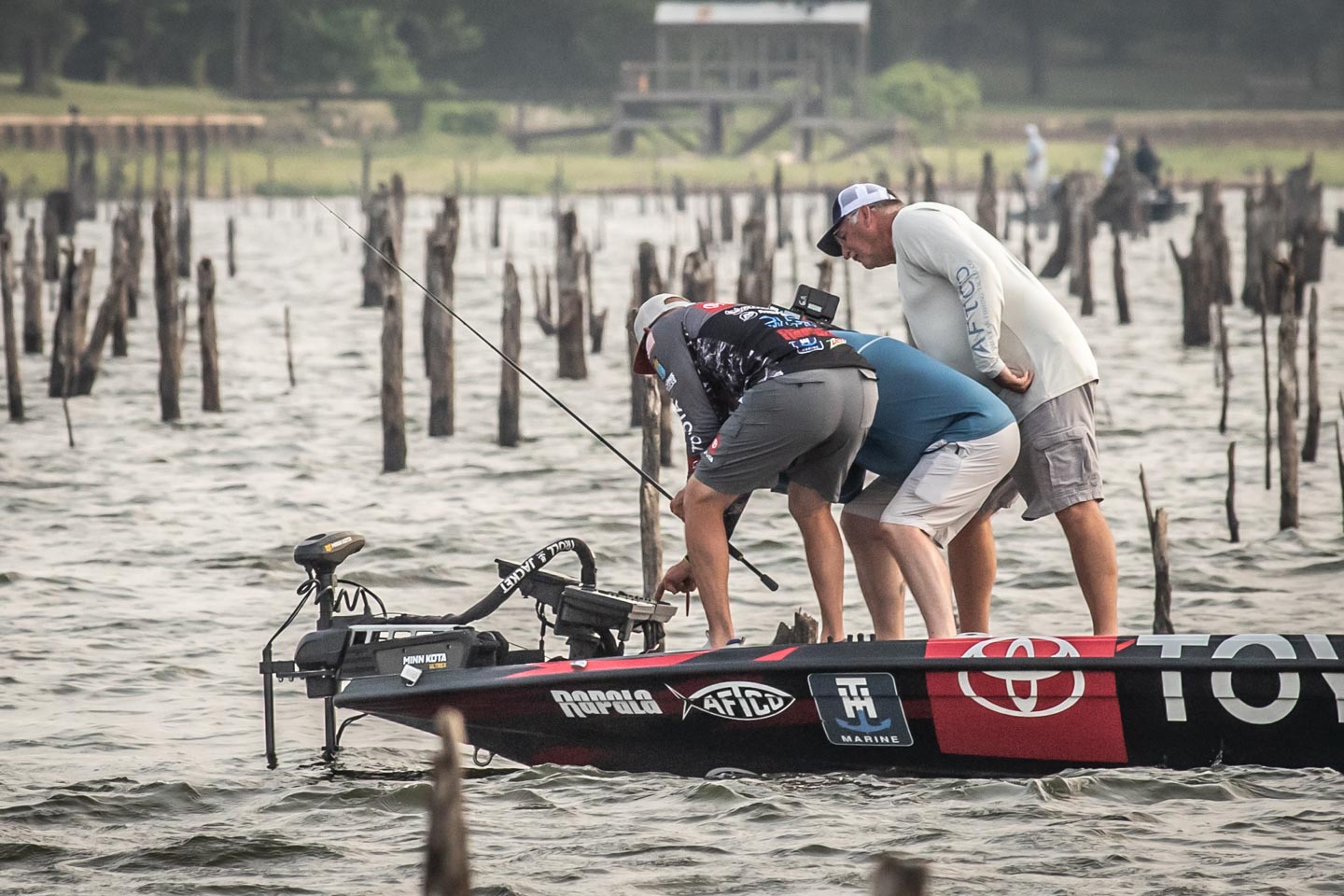
BIRMINGHAM, Ala. — As the use of electronics in fishing rapidly evolves and its impact on the competitive landscape grows, B.A.S.S. is creating a committee to continuously monitor the use of forward-facing and live sonar, listen to angler feedback and gauge the technology’s impact on competition, fan experience and bass populations. A review of onboard technology being used by each Elite Series angler will be conducted by tournament staff at the beginning of the 2024 season, with subsequent surveys of the Top 10 following each Elite event.
B.A.S.S. has emphasized that the organization is committed to listening to anglers, fans and industry insiders while monitoring and evaluating the use of these tools and studying how they impact both competition and fan experience.
“Live sonar is a groundbreaking tool that is having a huge impact on tournament competition. As a leading tournament organization, it is important our tournament team and the committee work closely together as we monitor the use of technology during the 2024 Elite season,” said B.A.S.S. Vice President of Tournaments Chris Bowes.
“B.A.S.S. takes our role as a steward of the sport seriously. Like all sports, to preserve the integrity of competition, we do have to periodically update rules. However, it was important to our organization to use data gathered across an entire season to evaluate technology.”
B.A.S.S. has already contacted all Elite Series anglers who requalified for the 2024 season to gauge their impressions on the impact of live technology during the previous season and has used that feedback to determine the appropriate steps for 2024.
While live sonar technology has been available since 2015, rapid advancements in the technology — as well as widespread adoption that has made anglers more efficient on the water — created both a positive and negative response, especially during the latter half of the 2023 season. Live sonar allows anglers to scan 360 degrees around the boat, making finding fish more efficient and allowing anglers to observe how fish react to their bait in real time.
Huge limits, highlighted by four smallmouth century belts on the St. Lawrence River at the final Elite event of the season, showcased how live sonar in the hands of anglers can make for incredibly exciting tournaments. Tight tournaments helped to fuel record-breaking fan engagement online, as the BassTrakk live leaderboard was visited more than 34 million times, Bassmaster social media channels generated 133 million impressions and fans visited Bassmaster.com 16 million times.
As part of the data the committee will use internally to evaluate live sonar technology’s impact throughout the coming season, every Elite Series angler’s boat will be inspected by B.A.S.S. staff, with staff noting a variety of details including the number and placement of all transducers, number and size of screens on the bow and dash and the batteries each angler is running.
As the season progresses, an additional survey of the Top 10 anglers at each event will also cover the percentage of practice and competition time spent using live sonar and the positioning of transducers used most prevalently during the event. That data will be reported to the committee alongside information such as catch rates and tournament weights to paint a more accurate picture of the technology’s significance to the competitive landscape of bass fishing.
“Every year the tournament team evaluates our current rules and listens to feedback from anglers, other staff, state agencies and the industry when considering updates,” explained Lisa Talmadge, tournament director for the Elite Series. “Before we consider rules limiting the competitive tools anglers have at their disposal, it is important to gather more information, listen to anglers, fans and industry leaders, consider a variety of options and look at the complete picture based on an entire Elite season.”
The committee will also track studies by fisheries biologists and state agencies as they look at the overall impact of live sonar on our fisheries. Historically, bass have adapted to new fishing techniques, and many around the sport believe fish will adapt to the use of live technology. Since bass are not traditionally harvested at the same rate as other species like crappie, panfish and walleye, for example, little impact on the health of bass populations is expected although, to date, few studies have included bass.
B.A.S.S. Conservation Director, Gene Gilliland will be closely monitoring live sonar’s impact on 2024 events and will communicate with state wildlife agencies, many of which are also studying the use of live technology on their fisheries.
As fishing participation swells across the U.S. and viewership expands — this season more than 11.2 million viewers have watched Bassmaster events on the FOX platforms — B.A.S.S. is also looking for opportunities to educate recreational anglers on how the best anglers in the world use their skills and available tools to break down fisheries.
“At B.A.S.S. we’re always searching for ways to fuel the passion for fishing through education,” said Bassmaster Magazine Editor-in-Chief James Hall. “Part of that mission involves leaning on the skills and talent our Elite Series anglers have spent years developing. The good news is, the use of live sonar technology has improved catch rates and fans are really responding well to those big fish and tight tournaments. Now, through our magazines, website and broadcasts, we need to ensure that we’re educating the Bassmaster audience on the best ways to use this technology alongside traditional methods to locate bass through the fundamentals of seasonal patterning.”
The committee tracking and reviewing the data will be comprised of representatives from across the B.A.S.S. organization, including staff from various departments including tournaments, editorial, conservation, business development, Bassmaster.com, television production and angler relations.
Officials stressed that, although the organization is forming the committee and conducting surveys to study live sonar technology during the 2024 season, rapid innovations will demand continuous evaluation, and they will have to be prepared to make future adjustments accordingly.





